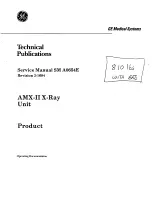
6.3
GOOSE Control Blocks (GoCB)
SEMOD129786-83 v9
en06000109.vsd
S
e
nd
Data-set
R
e
ce
iv
e
R
e
ce
iv
e
LN
LN
LN
LN
LN
S
e
nd
Data-set
R
e
ce
iv
e
R
e
ce
iv
e
LN
LN
LN
LN
S
e
nd
Data-set
R
e
ce
iv
e
R
e
ce
iv
e
LN
LN
LN
LN
LN
LN
Subnetwork
LN0
GoCB
DataSet
Input
GoCB
GoCB
DataSet
DataSet
Input
Input
Comm.
GSE
LD0
Server
LN0
GoCB
DataSet
Input
GoCB
GoCB
DataSet
DataSet
Input
Input
Comm.
GSE
LD0
Server
IEC06000109 V2 EN-US
Figure 10:
IEC 61850: Principle operation of GOOSE messages
The Generic Object Oriented Substation Event (GOOSE) class model is used to distribute input and
output data values between IEDs on bay level (in horizontal direction) through the use of multicast
services. GOOSE messages enable fast transmission from a publisher to one or several subscribers
(receivers).
The GOOSE service model of IEC 61850-7-2 provides the possibility for fast and reliable system-
wide distribution of input and output data values. This implementation uses a specific scheme of re-
transmission to achieve the appropriate level of reliability. When a GOOSE server generates a
SendGOOSEMessage request, the current data set values are encoded in a GOOSE message and
transmitted on the multicast association. The event that causes the server to invoke a SendGOOSE
service is a local application issue as defined in IEC 61850-7-2. Each update may generate a
message in order to minimize throughput time.
Additional reliability is achieved by re-transmitting the same data (with gradually increasing SqNum
and retransmission time).
1MRK 511 441-UEN Rev. C
Section 6
Data sets and control blocks
Switchgear control unit SAM600-IO
29
Communication protocol manual
© 2017 - 2021 Hitachi Power Grids. All rights reserved
















































